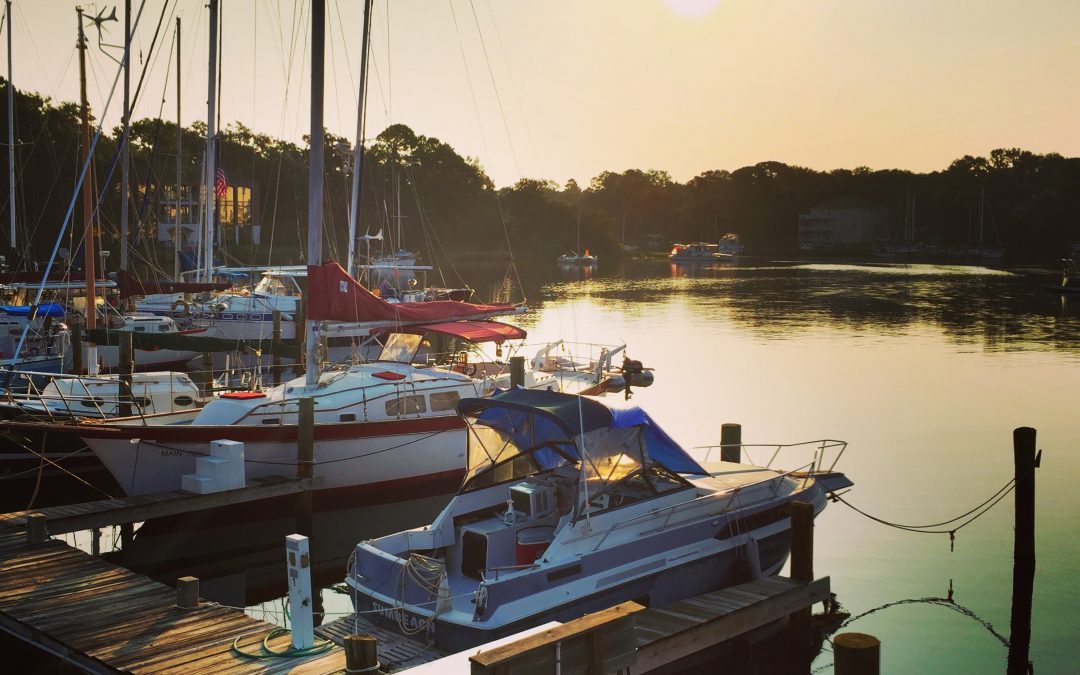
by Scott Jackson | Apr 17, 2020
Florida Sea Grant is maintaining a curated list of disaster assistance options for Florida’s coastal businesses disrupted by COVID-19.
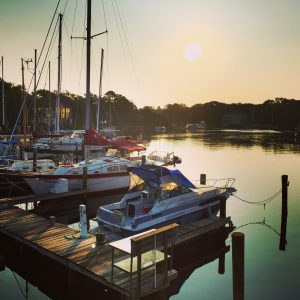
Boats at calmly at rest in Massalina Bayou, Bay County, Florida.
The list contains links to details about well- and lesser-known options and includes “quick takeaway” overviews of each assistance program. Well-funded and widely available programs are prioritized on the list. The page also houses a collection of links to additional useful resources, including materials in Spanish.
“There is a lot of information floating around out there,” says Andrew Ropicki, Florida Sea Grant natural resources economist and one of the project leaders. “We are trying to provide a timely and accurate collection of resources that will be useful for Florida coastal businesses.”
Ropicki and others on the project team stress that the best place to start an application for disaster aid is to visit with your bank or lender and the Florida Small Business Development Center (SBDC). They also suggest contacting local representatives by telephone or email and not to just rely on internet-based applications.
Overview of Selected Disaster Assistance Programs Benefiting Florida Small Businesses including Agriculture, Aquaculture, and Fisheries (COVID-19)
The project team — which includes experts from Florida Sea Grant, University of Florida Institute of Food and Agricultural Sciences (UF/IFAS) Extension, and the UF/IFAS Center for Public Issues Education — reviews the page regularly for accuracy and to include new options.
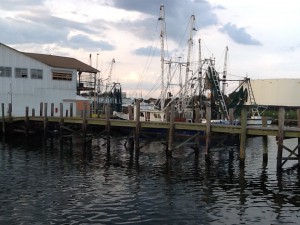
Commercial seafood is a large part of Florida’s economy and culture.
Photo: Rick O’Connor
“[I] really appreciate the outstanding work that you and FSG have done on consolidating the various types of aid available to fishermen due to the virus,” said Bill Kelly, executive director of the Florida Keys Commercial Fishermen’s Association, in a recent email. “I’ve been searching for a comprehensive listing and you just provided it.”
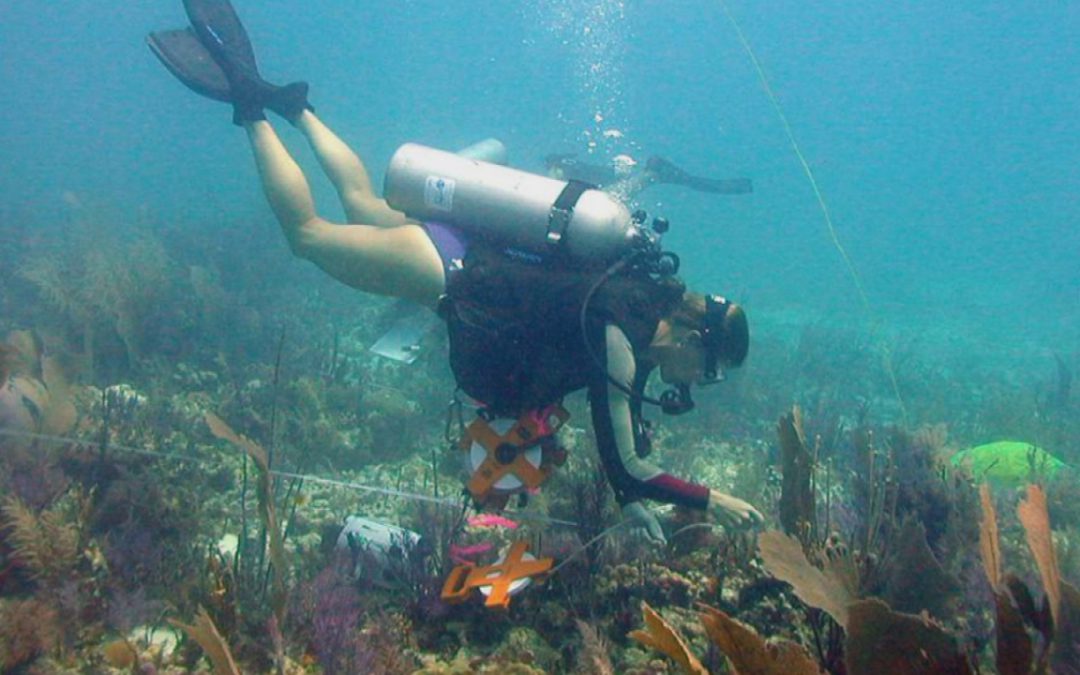
by Rick O'Connor | Aug 27, 2019
We like to post articles about fun and adventurous activities people can do outdoors in the Florida panhandle… but it is very hot out there this time of year. What sort of outdoor adventure can you have when the temperatures are running in the 90s and the humidity in the 80% range?
Water…
Many of us have our favorite swimming holes – local rivers, springs, estuaries, or the Gulf itself, but what about SCUBA? I recently talked to a local dive charter and they said the current weather pattern is not a problem for them. The seas are relatively calm – easy to get offshore, you are underwater – so not so hot, and afternoon rains washes the gear off. Sounds like a good adventure on a hot summer day.
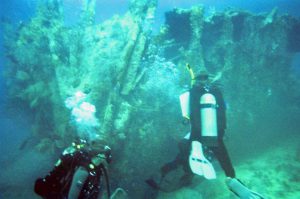
Diving near large coral.
Photo: Indiana University
But SCUBA is not for everyone. My wife tried and did not care for it. It certainly makes some folks nervous. Underwater seems confining to many. There is a lot of equipment you have to wear, and that can be bothersome. There are creatures out there, some of them rather large. And then there is the risk, many see SCUBA as a dangerous activity – and it can be. This is why they require a course for certification… to address all of these issues.
During the course they will put you in a swimming pool with the gear and see how comfortable you are. Honestly, I remember the first time I tried the tank. My brain was telling me “DO NOT INHALE… YOU ARE NOT A FISH”. But eventually I did, and MAN was that cool. As you become more comfortable you can swim some. All of this is done at the shallow end so if it is not working for you – you are fine. The equipment really is not that cumbersome while in the water. Swimming slow laps, getting use the breathing on the equipment, clearing your mask if water gets in, they teach you everything you need to know to be relaxed while underwater.
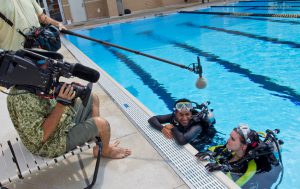
Student and instructor practice SCUBA skills in a swimming pool.
Photo: University of Central Florida.
There are skills you will need to learn while in the pool, and then the there is the classroom sessions. Much of it deals with the danger issue of diving – what could go wrong. As Jacques Cousteau once said, it is not going down that is the problem, it is coming back. We are all aware of the pressure changes that occur as you descend into the ocean. There is air pressure on your body at sea level – about 15 p.s.i. We do not notice this because our body compensates for it. However, as you descend into the water the pressure increases 15 p.s.i. every 33 feet you descend. You will feel this and are taught how to compensate for it. Once on the bottom, you will find all sorts of structures, fish, sometimes even sea turtles. You swim around trying to take it all in, but the entire you are down the pressure is pushing gases into your body. When it is time to return, you must do this the correct way – “gas off” as they say. Again, local instructors will explain all of this in class and you will have a chance to practice in the pool.
Then there is the open water dive.
You get a chance to test your skills in the open Gulf.
Again, this makes some a bit nervous. It is one thing in the safety of a swimming pool. It is another in the wild blue. There are jellyfish, fish, bigger fish, waves, can’t see the bottom yet, pirates, who knows what is running through your mind. But you are with friends. Everyone is going through the same experience and you have master divers at your side. It is all good. You eventually reach the bottom and see a world that is truly amazing.
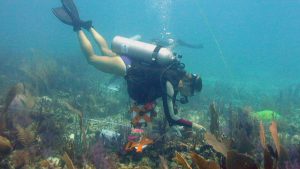
A diver explores a coral reef.
Photo: NOAA
Again, SCUBA is not for everyone, but it is a fun activity on these hot summer days. Something to consider trying. There are many great dive instructors along the Florida panhandle, and one near you. If SCUBA is too much – consider snorkeling, it can be a rewarding activity as well.
Stay cool.
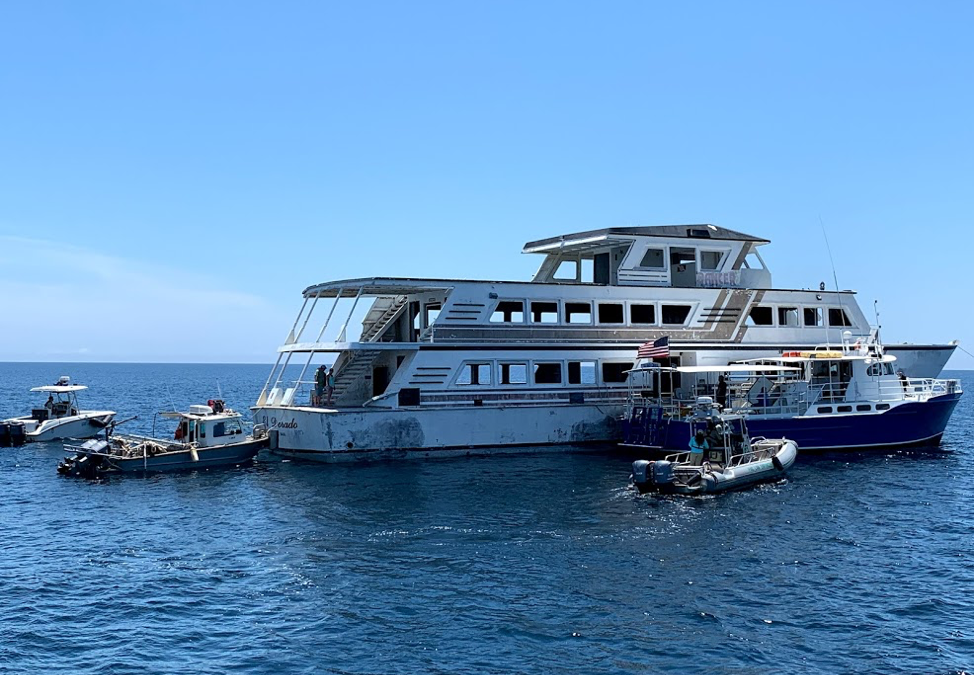
by Scott Jackson | Jun 21, 2019
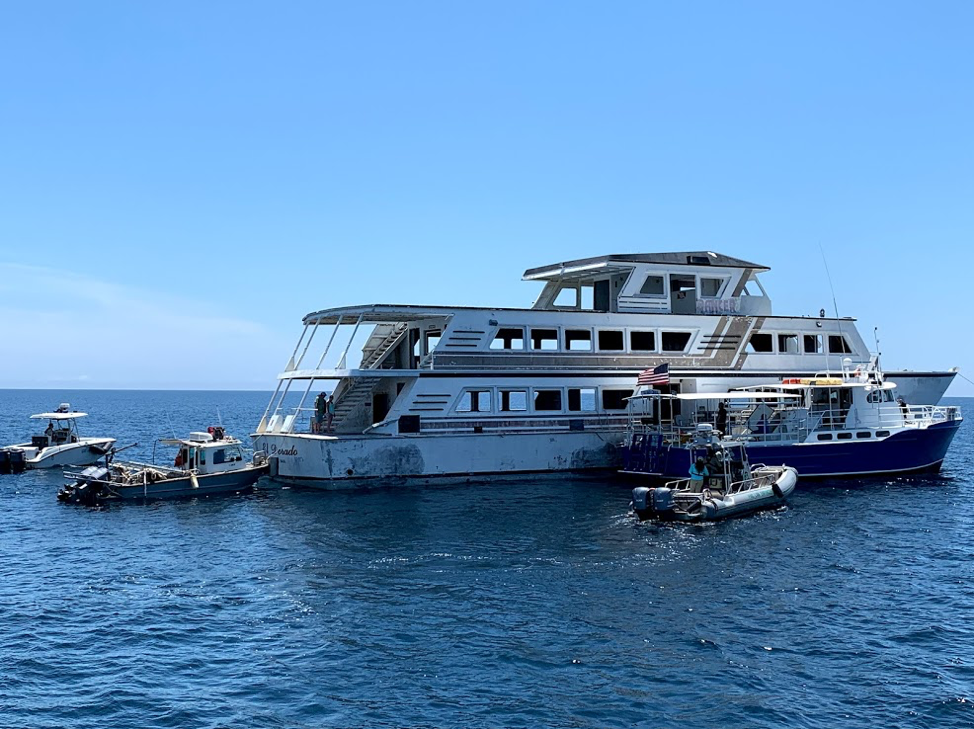
Panama City Dive Center’s Island Diver pulls alongside of the El Dorado supporting the vessel deployment by Hondo Enterprises. Florida Fish and Wildlife crews also are pictured and assisted with the project from recovery through deployment. The 144 foot El Dorado reef is located 12 nautical miles south of St Andrew Pass at 29° 58.568 N, 85° 50.487 W. Photo by L. Scott Jackson.
In the past month, Bay County worked with fishing and diving groups as well as numerous volunteers to deploy two artificial reef projects; the El Dorado and the first of the Natural Resources Damage Assessment (NRDA) reefs.
These sites are in Florida waters but additional opportunities for red snapper fishing are available this year to anglers that book for hire charters with captains holding federal licenses. Federal licensed Gulf of Mexico charters started Red Snapper season June 1st and continue through August 1st. Recreational Red Snapper fishing for other vessels in State and Federal waters is June 11th – July 12th. So booking a federally licensed charter can add a few extra fish to your catch this year.
The conversion of the El Dorado from a storm impacted vessel to prized artificial reef is compelling. Hurricane Michael left the vessel aground in shallow waters. This was in a highly visible location close to Carl Grey Park and the Hathaway Bridge. The Bay County Board of County Commissioners (BOCC) acquired the El Dorado, January 14, 2019 through negotiations with vessel owner and agencies responsible for recovery of storm impacted vessels post Hurricane Michael.
The El Dorado was righted and stabilized, then transported to Panama City’s St Andrews Marina by Global Diving with support from the Coast Guard and Florida Fish and Wildlife. Hondo Enterprises, was awarded a contract to complete the preparation and deployment of the vessel for use as an artificial reef.
Reefing the El Dorado provides new recreational opportunities for our residents and tourists. The new reef delivers support for Bay County’s fishing and diving charters continuing to recover after Hurricane Michael. Several local dive charter captains assisted in the towing and sinking of the El Dorado.
The El Dorado was deployed approximately 12 nm south of St. Andrew Bay near the DuPont Bridge Spans May 2, 2019. Ocean depth in this area is 102 feet, meaning the deployed vessel is accessible to divers at 60 feet below the surface.
The Bay County Board of County Commissioners continues to invest in the county’s artificial reef program just as before Hurricane Michael. Additional reef projects are planned for 2019 – 2020 utilizing Natural Resources Damage Assessment (NRDA) and Resources and Ecosystems Sustainability, Tourist Opportunities, and Revived Economies of the Gulf Coast States Act (RESTORE Act) funds. These additional projects total over 1.3 million dollars utilizing fines as a result of the Deepwater Horizon Oil Spill. Deployments will occur in state waters in sites located to both the east and west of St. Andrew Bay Pass.
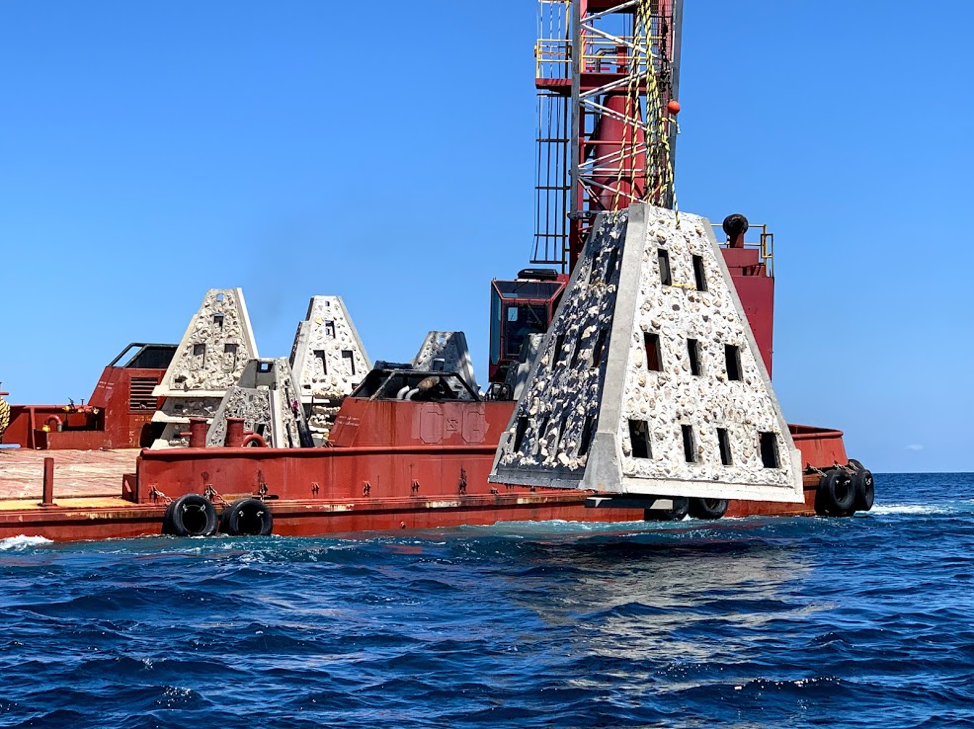
Walter Marine deploys one of nine super reefs deployed in Bay County’s NRDA Phase I project located approximately 12 nautical miles southeast of the St. Andrew Pass. Each massive super reef weighs over 36,000 lbs and is 15 ft tall. Multiple modules deployed in tandem provides equivalent tonnage and structure similar to a medium to large sized scuttled vessel. Photo by Bob Cox, Mexico Beach Artificial Reef Association.
The first of these NRDA deployments for Bay County BOCC was completed May 21, 2019 in partnership with Mexico Beach Artificial Reef Association, Florida Fish and Wildlife Conservation Commission, and Florida Department of Environmental Protection using a $120,000 portion of the total funding. The deployment site in the Sherman Artificial Reef Permit Area is approximately 12 nm south east of St Andrew Bay Pass at a depth of 78 – 80ft.
| Patch Reef # |
Latitude |
Longitude |
| BC2018 Set 1
(6 Super Reefs and 4 Florida Specials) |
29° 55.384 N |
85° 40.202 W |
| BC2018 Set 2
(1 Super Reef and 4 Florida Specials) |
29° 55.384 N |
85° 39.739 W |
| BC2018 Set 3
(1 Super Reef and 4 Florida Specials) |
29° 55.384 N |
85° 39.273 W |
| BC2018 Set 4
(1 Super Reef and 4 Florida Specials) |
29° 55.384 N |
85° 38,787 W |
In 2014, Dr. Bill Huth from the University of West Florida, estimated in Bay County the total artificial reef related fishing and diving economic impact was 1,936 jobs, $131.98 million in economic output and provided $49.02 million in income. Bay County ranked #8 statewide in artificial reef jobs from fishing and diving. Bay County ranked #3 in scuba diving economy and scuba diving was 48.4 % of the total jobs related to artificial reefs. Dr. Huth also determine that large vessels were the preferred type of artificial reef for fishing and diving, with bridge spans and material the next most popular. Scuba diving and fishing on artificial reefs contributes significantly to the county’s economic health.
For more information and assistance, contact UF/IFAS Extension Bay County at 850-784-6105 or Bay@ifas.ufl.edu. Follow us on Facebook at http://faceboook.com/bayifas .
An Equal Opportunity Institution. UF/IFAS Extension, University of Florida, Institute of Food and Agricultural Sciences, Nick T. Place, Dean for UF/IFAS Extension. Single copies of UF/IFAS Extension publications (excluding 4-H and youth publications) are available free to Florida residents from county UF/IFAS Extension offices.
This article is also available through the the Panama City New Herald

by Laura Tiu | May 3, 2019
There are five species of sea turtles that nest from May through August on Florida beaches, with hatching stretching out until October. The loggerhead, the green turtle, and the leatherback all nest regularly in the Panhandle, with the loggerhead being the most frequent visitor. Two other species, the hawksbill and Kemp’s Ridley nest infrequently. All five species are listed as either threatened or endangered under the Endangered Species Act. Due to their threatened and endangered status, the Fish and Wildlife Conservation Commission/Fish and Wildlife Research Institute monitors sea turtle nesting activity on an annual basis.

A group checks out a recently hatched sea turtle nest on the dunes in south Walton county in Florida.
Annual total nest counts for loggerhead sea turtles on Florida’s index beaches fluctuate widely and scientists do not yet understand fully what drives these changes. From 2011 to 2018, an average of 106,625 sea turtle nests (all species combined) were recorded annually on these monitored beaches. In 2018, there was a slight decrease in nests with only 96,945 nests recorded statewide. This is not a true reflection of all of the sea turtle nests each year in Florida, as it doesn’t cover every beach, but it gives a good indication of nesting trends and distribution of species.
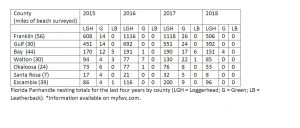
2015-2018 Florida Panhandle turtle nesting totals for all species.
If you want to see a sea turtle in the Florida Panhandle, please visit one of the state-permitted captive sea turtle facilities listed below, admission fees may be charged. Please call the number listed for more information.
- Gulf Specimen Marine Laboratory
222 Clark Dr
Panacea, FL 32346
850-984-5297
Admission Fee
- Gulf World Marine Park
15412 Front Beach Rd
Panama City, FL 32413
850-234-5271
Admission Fee
- Gulfarium Marine Adventure Park
1010 Miracle Strip Parkway SE
Fort Walton Beach, FL 32548
850-243-9046 or 800-247-8575
Admission Fee
- Navarre Beach Sea Turtle Center
8740 Gulf Blvd
Navarre, FL 32566
850-499-6774
The Foundation for The Gator Nation. An Equal Opportunity Institution

by Scott Jackson | Mar 29, 2019
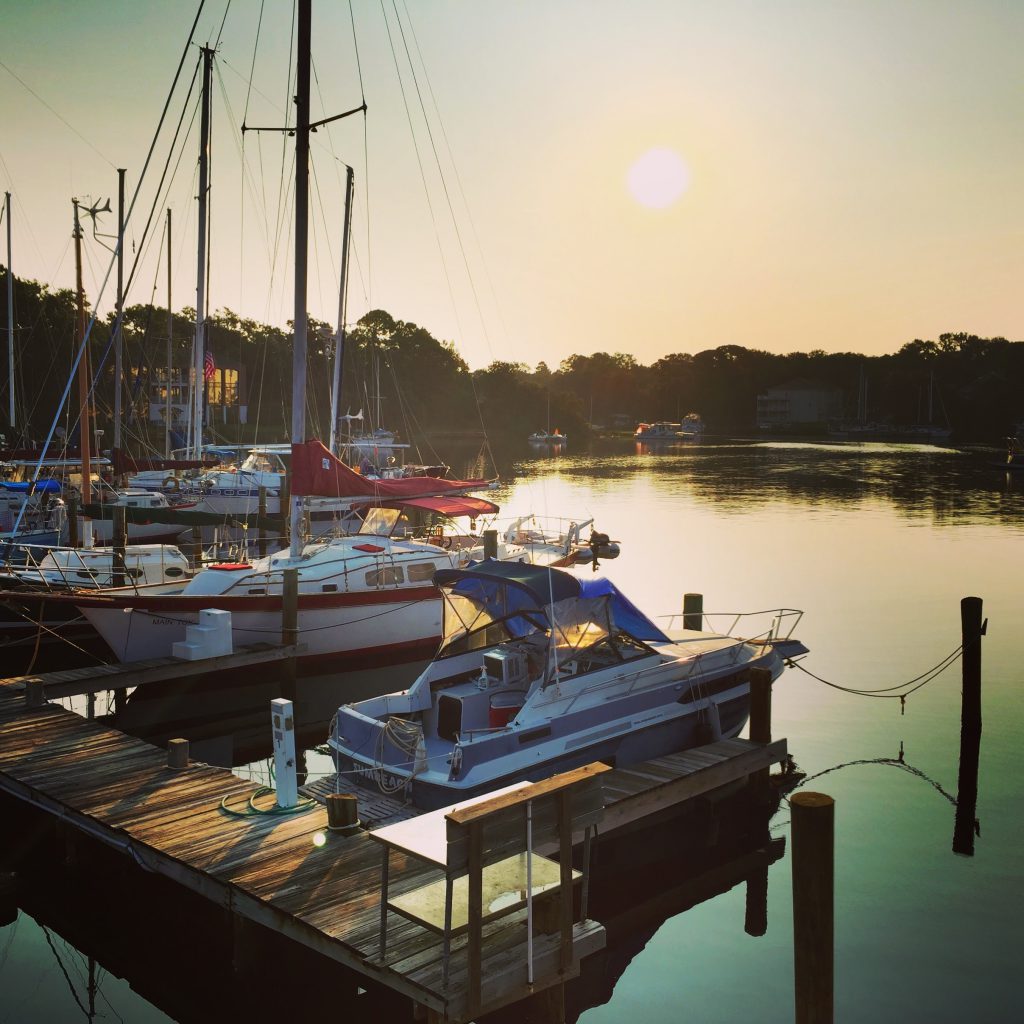
Boats at a calm rest in Massalina Bayou, Bay County, Florida.
Wow! I was so excited to hear the news. Dad had just called to invite me on a deep sea trip out of Galveston. I had grown up fishing but had never been to sea. My mind raced – surely the fish would be bigger than any bass or catfish we ever caught. I day dreamed for a few moments of being in the newspaper with the headline, “Local Teen Catches World Record Red Snapper”.
It seemed more like a Christmas Morning when dad woke me up for our 100-mile car trip to the coast. We hurried to breakfast just a few hours before sunrise. I had the best fluffy pancakes with a lot of syrup, washed down with coffee with extra cream and sugar. I was wide awake and ready for the fishing adventure of a lifetime!
The crew welcomed us all aboard and helped us settle in. Dad was still tired and went to nap below deck. I was outside taking in all the sights of a busy head boat, including the smell of diesel fuel, bait, and dressed fish. About an hour into my great fishing adventure things started to change. I grew queasy and tired. I went to find my dad and he was already sick. I looked at him and then turned around to go out the ship’s door. My eyes saw the horizon twist sideways and my brain said “WRONG!!!” – this was my first encounter with seasickness.
The crew quickly moved both of us back outside. I was issued a pair of elastic pressure wristbands – the elastic holds a small ball into the underside of your wrist. The attention and sympathy might have made me feel a little better but there was really no recovery until we got back into the bay an excruciating 6 hours later. There were no headlines to write this day, only the chance to watch others catch fish while my stomach and head churned – often in opposite directions.
Fast forward to today, decades later. I often make trips into Gulf to help deploy artificial reefs without any problems with motion sickness. Some of my success in avoiding seasickness are lessons I learned from that dreadful introduction to deep sea fishing long ago.
- Be flexible with your schedule to maximize good weather and sea conditions. If you are susceptible to motion sickness in a car or plane this is an important indicator. Sticking to an exact time and date could set you up for a horrible experience. Charter companies want your repeat business and to enjoy the experience over and over again.
- Get plenty of rest before your fishing adventure. Come visit and if necessary spend the night. Start your day close to where you will be boarding the boat.
- Eat the right foods. You don’t need much food to start the day, keep it light and avoid fatty or sugary diet items. As the day goes by, eat snacks and lunch if you get hungry.
- Stay hydrated and in balance. Take in small sips when you are queasy or have thrown up. You need to drink but consuming several bottles of water in a short time period can create nausea.
- Avoid the smell zone. When possible, position yourself on the vessel to avoid intense odors like boat exhaust or fish waste in order to keep your stomach settled. It is best to stay away from other seasick individuals as their actions can influence your nausea.
- Mind over matter – Have confidence. Knowing you have prepared yourself to be on the water with sleep, diet, and hydration is often enough to avoid seasickness. However, if you routinely face motion or seasickness then a visit with your doctor can provide the best options to make your days at sea a blessing. Their help could be the final ingredient in your personal recipe for great times on the water with friends and family.
For more information, contact Scott Jackson at the UF/IFAS Extension Bay County Office at 850-784-6105.
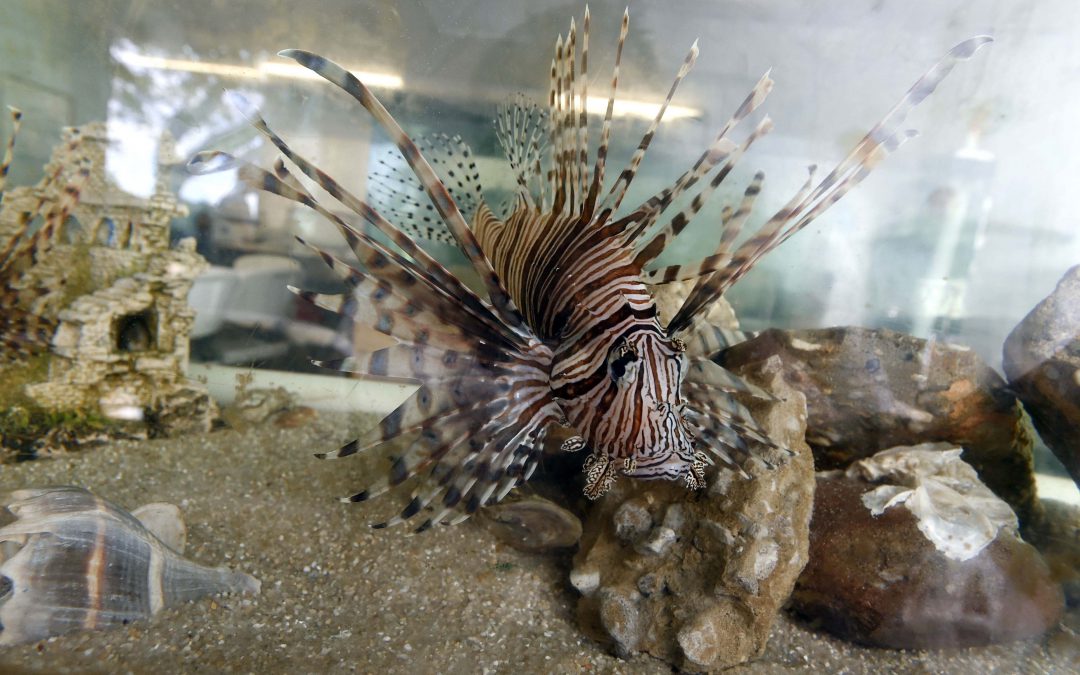
by Laura Tiu | Mar 6, 2019

The northwest Florida area has been identified as having the highest concentration of invasive lionfish in the world. Lionfish pose a significant threat to our native wildlife and habitat with spearfishing the primary means of control. Lionfish tournaments are one way to increase harvest of these invaders and help keep populations down.
Located in Destin FL, and hosted by the Gulf Coast Lionfish Tournaments and the Emerald Coast Convention and Visitors Bureau, the Emerald Coast Open (ECO) is projected to be the largest lionfish tournament in history. The ECO, with large cash payouts, more gear and other prizes, and better competition, will attract professional and recreational divers, lionfish hunters and the general public.
You do not need to be on a team, or shoot hundreds of lionfish to win. Get rewarded for doing your part! The task is simple, remove lionfish and win cash and prizes! The pretournament runs from February 1 through May 15 with final weigh-in dockside at AJ’s Seafood and Oyster Bar on Destin Harbor May 16-19. Entry Fee is $75 per participant through April 1, 2019. After April 1, 2019, the entry fee is $100 per participant. You can learn more at the website http://emeraldcoastopen.com/, or follow the Tournament on Facebook.
The Emerald Coast Open will be held in conjunction with FWC’s Lionfish Removal & Awareness Day Festival (LRAD), May 18-19 at AJ’s and HarborWalk Village in Destin. The Festival will be held 10 a.m. to 5 p.m each day. Bring your friends and family for an amazing festival and learn about lionfish, taste lionfish, check out lionfish products! There will be many family-friendly activities including art, diving and marine conservation booths. Learn how to safely fillet a lionfish and try a lionfish dish at a local restaurant. Have fun listening to live music and watching the Tournament weigh-in and awards. Learn why lionfish are such a big problem and what you can do to help! Follow the Festival on Facebook!
“An Equal Opportunity Institution”
















